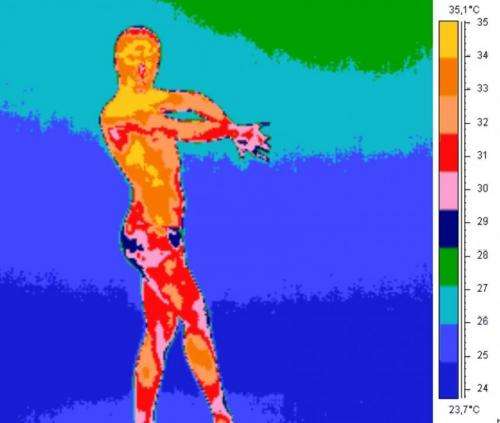Researchers successfully measure the duende of flamenco dancers

The Real Academia Española, Spain's most authoritative dictionary, states that in the southern Spanish region of Andalucía, duende is a "mysterious, ineffable charm". The poet Federico García Lorca, in his lecture 'Theory and Play of the Duende' (1933), defined duende as a "mysterious force that everyone feels and no philosopher has explained".
For the first time anywhere in the world, researchers at the University of Granada (UGR) have successfully measured the duende of flamenco. To do so, scientifically and objectively, they have used thermography, a technique that detects body temperature, which they have applied to the field of psychology.
The scientists-who belong to the UGR Brain Mind and Behavior Research Center-have used various experiments to determine the 'thermal imprint' of duende, an objective criterion that enable us to distinguish between dancers who really do feel it and those who don't.
Ten professional flamenco dancers participated in the study. All were final year students of flamenco at the Professional Conservatory of Dance of Granada and had been dancing for at least 10 years.
All the participants underwent a range of tests in which the researchers used cutting edge thermography to measure the dancers baseline temperature at rest and the temperature of various parts of their bodies while dancing flamenco and while watching videos of others dancing flamenco.
Nose and gluteus temperatures fall
The results showed that when dancing flamenco and concentrating on feeling it, some dancers experienced a state which in the study of empathy is defined as "empathic stress". This coincided with a significant fall in the temperature of the nose and gluteus (mean 2.1°C) while they were dancing flamenco and a similar but lesser decrease (mean 1°C) when watching a recording of flamenco dancing.
Elvira Salazar-López-the principal author of the study and currently a researcher at the Technical University of Munich (Germany)-says that the thermal imprint of flamenco is related with the activation of different parts of the brain, flamenco technique, empathy, and the duende of the subjects.
"Our experiments," says Salazar, "have shown that the better the dancer's technique, the lower their empathic stress. Good technique helps the dancer, but it isn't enough. Feeling duende implies an emotional state contrary to having empathy, and nose and gluteus temperature is an excellent marker indicating greater emotional understanding of flamenco which, in psychological terms, implies greater empathic stess".
More information:
The Thermal Imprint of Flamenco Duende
Salazar-López E, Dominguez E, Verdejo J, Gómez-Milán E
Brain, Mind and Behavior Research Center, University of Granada (CIMCYC-UGR)
Thermology international 2014, 24(4) 147-156
Provided by University of Granada